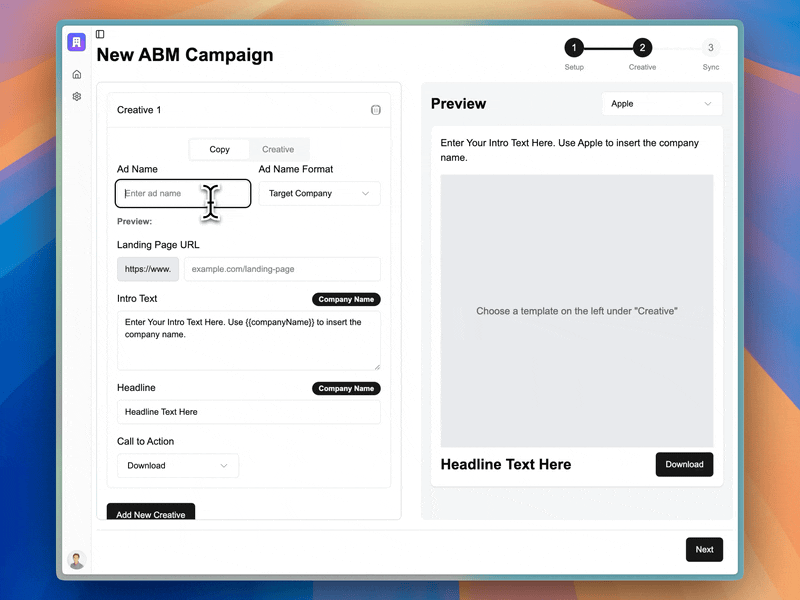In today’s challenging economic landscape, digital marketers face a perfect storm of obstacles: inflation remains stubbornly high, interest rates sit at two-decade peaks, and platform costs continue to climb. Yet despite these headwinds, expectations for marketing performance haven’t diminished. The solution isn’t simply cutting budgets—it’s maximizing the efficiency of every marketing dollar spent. By implementing strategic optimizations across your digital marketing efforts, you can weather these economic challenges and potentially emerge stronger than competitors who fail to adapt.
Key Highlights
- Economic Pressure: With inflation still high and interest rates at two-decade peaks, marketers must optimize every dollar spent
- Data-Driven Decisions: Leveraging analytics and marketing science can improve ROI by up to 30% while reducing wasted spend
- Channel Diversification: Moving beyond traditional platforms to include CTV and niche platforms can lower acquisition costs
- Automation Advantage: Implementing marketing automation can reduce operational costs by 12.2% while maintaining performance
- Content Optimization: Content marketing delivers 3x the leads per dollar compared to paid search, making it crucial during budget constraints
TABLE OF CONTENTS:
The Economic Reality Facing Digital Marketers in 2025
The digital marketing landscape has significantly transformed in recent years. While the global digital advertising market continues to grow—estimated at $667 billion in 2024 and projected to reach $786.2 billion by 2026—this growth comes with increased competition and costs.
According to recent data, 72% of overall marketing budgets now go toward digital channels, with 63% of businesses having increased their digital marketing investments in recent years. However, this influx of spending has driven up costs across major platforms. Google Ads and Meta have both raised prices on their advertising platforms, squeezing margins for advertisers across industries.
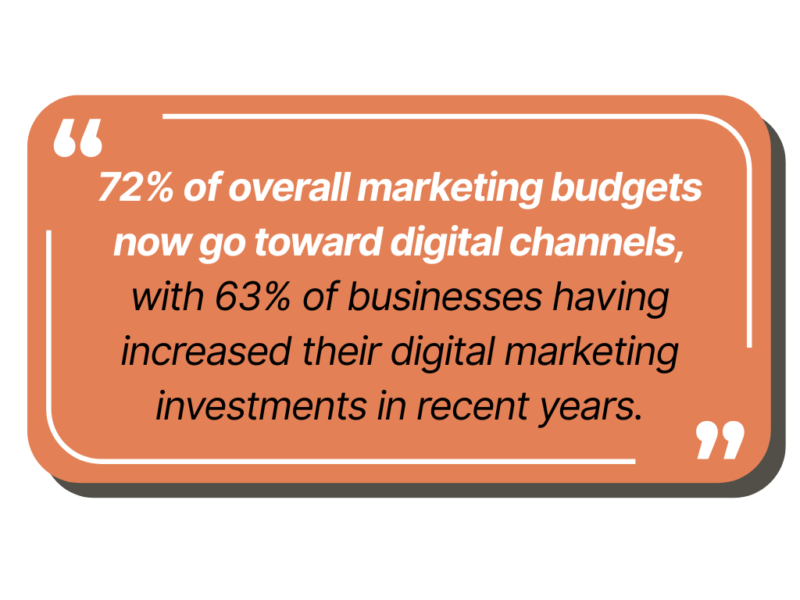
As McKinsey has noted, economic volatility is the “new normal,” requiring marketers to develop more agile, efficient approaches. The days of growth-at-all-costs marketing are giving way to a more measured, ROI-focused strategy.
Data-Driven Marketing: The Foundation of Efficiency
The most significant efficiency improvements begin with data. According to a recent CMO survey, data analytics was the top marketing investment companies consider when tracking and understanding customer behavior.
“Marketing decisions should be based on data rather than assumptions,” explains digital marketing expert Ron Browning. “By utilizing tools like Google Analytics, social media insights, and CRM software, businesses can gather actionable insights that eliminate guesswork and focus resources where they’ll generate the greatest returns.”
This approach, often called marketing science, involves connecting data across the sales funnel to make more informed decisions. By implementing cross-channel integration—bringing together data from social media, email, websites, and other touchpoints—companies gain a complete picture of customer behavior, making it easier to fine-tune strategies and eliminate underperforming investments.
Budget Optimization Strategies That Work
When facing budget constraints, the instinct might be to cut spending company-wide. However, a more strategic approach involves reallocating resources based on performance data.
One effective method is SKU-level analysis, which examines the marketing performance of individual products or services. This granular approach allows businesses to concentrate remaining ad dollars where they’ll generate the most efficient returns.
E-commerce recruitment specialist Harry Joiner suggests brands should reserve ad inventory “for known winners and margin accretive products” while deprioritizing broad brand campaigns during periods of budget pressure. This shift from growth-focused to efficiency-focused advertising can maintain revenue while reducing overall spend.
Another key strategy is optimizing Return on Ad Spend (ROAS). As platform costs rise, businesses must focus on improving the entire customer journey, from creative ads to the landing page experience, ensuring every marketing dollar is tracked and optimized for maximum impact.
Content Marketing: Maximum Impact with Minimal Investment
Content marketing consistently ranks among the most cost-effective digital strategies, with studies showing it generates three times more leads per dollar than paid search. This makes it particularly valuable during periods of budget constraints.
Instead of spending heavily on ads, invest in high-quality content that provides genuine value to your audience. Blog articles, infographics, videos, and podcasts can improve SEO, enhance brand credibility, and foster audience engagement at a fraction of the cost of paid advertising.
The key is consistency and quality. Regularly publishing relevant content helps with search engine rankings while building a resource library that continually generates leads long after publication. Focus on creating content that addresses user intent and delivers immediate, actionable value to consumers.
Automation and AI: Doing More with Less
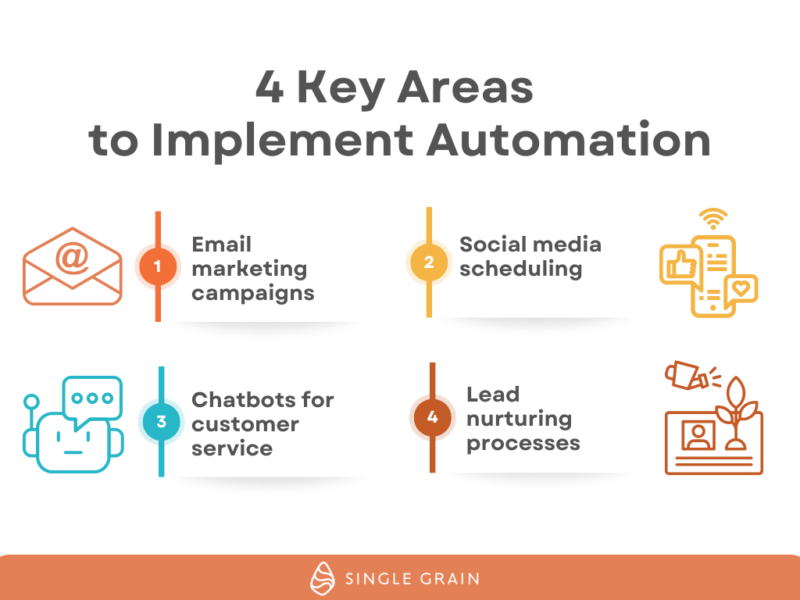
Automation tools have become essential for streamlining marketing efforts and reducing operational costs. According to industry research, implementing marketing automation can reduce marketing overhead by 12.2% while maintaining or even improving performance.
Key areas to implement automation include:
- Email marketing campaigns
- Social media scheduling
- Chatbots for customer service
- Lead nurturing processes
With the right automation in place, businesses can scale marketing efforts without proportionally increasing costs. AI tools can further enhance efficiency through predictive analytics, customer segmentation, and even content optimization.
Channel Diversification and Optimization
If your business has relied primarily on Google Ads and Facebook for paid lead generation, now is the time to explore alternatives. While these platforms remain important, new opportunities are emerging on other channels.
Connected TV (CTV) advertising is transforming how businesses approach advertising due to its precision targeting and measurable outcomes. For B2B brands, LinkedIn offers highly targeted reach, while industry-specific platforms can provide access to niche audiences at lower costs.
“In this period of uncertainty, we’re seeing a significant shift toward more flexible, performance-based advertising models that allow brands to adjust spending quickly if conditions change,” notes Jonathan Gudai, CEO of Adomni.
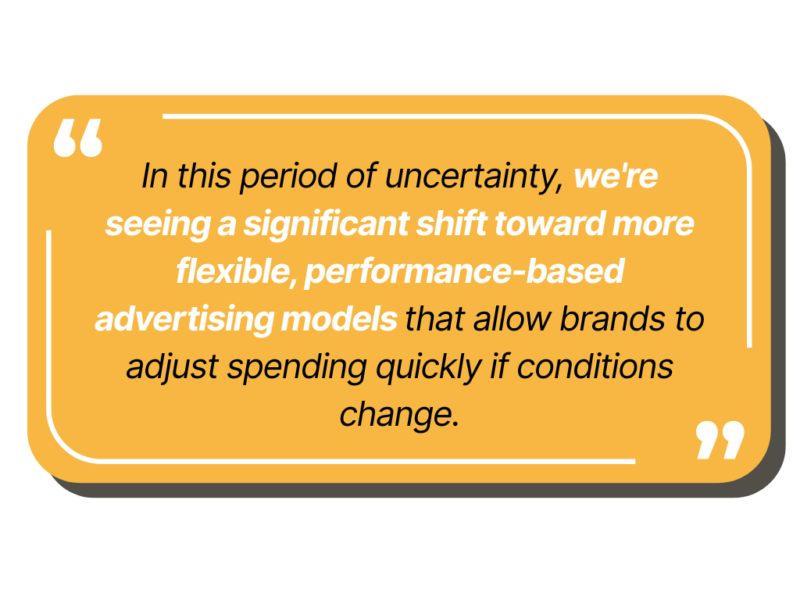
By exploring these platforms, businesses can tailor their advertising to reach their target audience more efficiently while maintaining a consistent brand message across all channels.
Lead-to-Sale Process Optimization
Many companies focus too heavily on top-of-funnel metrics like leads generated or website traffic, but real efficiency comes from optimizing further down the funnel. Shift your focus to metrics like appointments held, confirmed sales meetings, and conversion rates.
By aligning marketing efforts with the quality of leads and their progression through the sales funnel, companies can eliminate wasted ad spend on underperforming channels and campaigns. Leverage CRM integrations, AI tools, and robust tracking systems to refine strategies that nurture high-intent prospects, reduce friction in the buyer’s journey, and ultimately improve conversion rates and ROI.
Implementation Roadmap: Where to Start
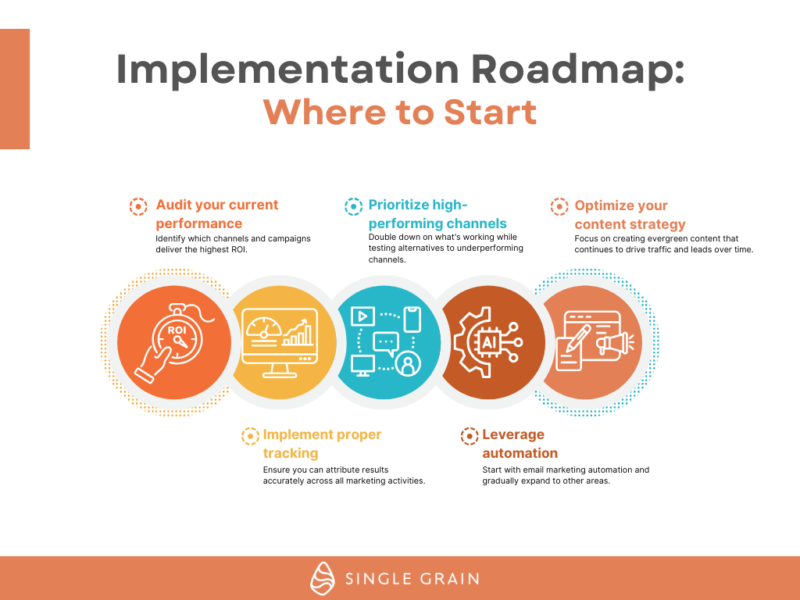
Improving marketing efficiency doesn’t happen overnight, but there are several practical steps you can take immediately:
- Audit your current performance: Identify which channels and campaigns deliver the highest ROI.
- Implement proper tracking: Ensure you can attribute results accurately across all marketing activities.
- Prioritize high-performing channels: Double down on what’s working while testing alternatives to underperforming channels.
- Leverage automation: Start with email marketing automation and gradually expand to other areas.
- Optimize your content strategy: Focus on creating evergreen content that continues to drive traffic and leads over time.
Looking Forward
While economic challenges may create budget pressures, forward-thinking marketers can use this disruption as an opportunity to refine their approach. By focusing on efficiency, leveraging data for decision-making, and implementing strategic optimizations, brands can emerge from this period with stronger, more sustainable marketing operations.
For personalized advertising that maximizes ROI during these challenging economic periods, tools like Karrot.ai can help transform your LinkedIn ads with 1-1 personalized messaging that actually converts. By delivering individualized messages without sacrificing scale, Karrot helps you make every advertising dollar work harder—exactly what’s needed in today’s efficiency-focused marketing landscape.
The most successful marketers in 2025 will be those who view efficiency not as a temporary response to budget constraints, but as a fundamental principle that drives every aspect of their digital marketing strategy.




